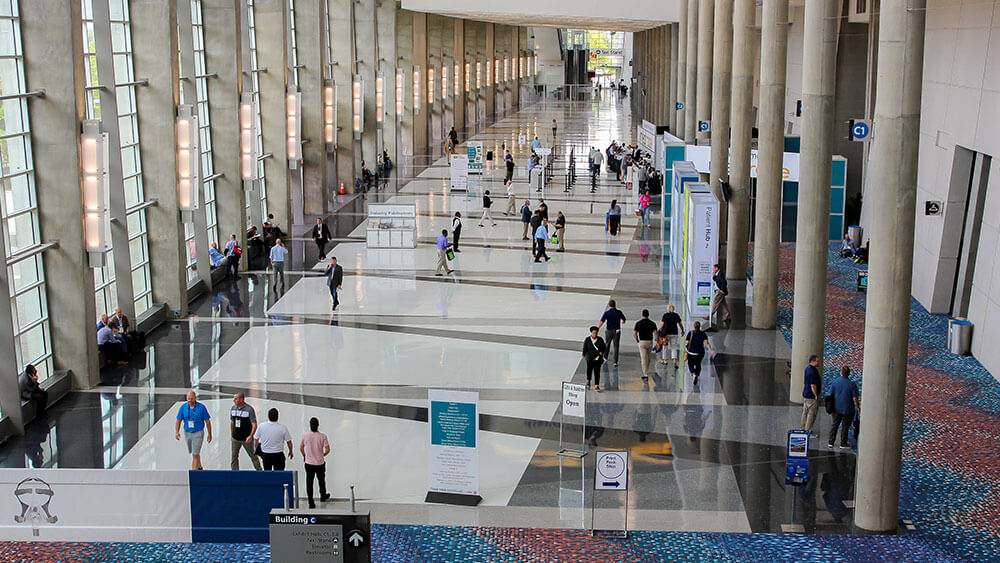
The Georgia World Congress Center in Atlanta is the first convention center in the U.S. to receive the Global Biorisk Advisory Council STAR certification. (Courtesy GWCC)

Michelle Russell
On a recent international panel I participated in — Morale and Motivation in the Tourism Industry, organized by TravelShop Turkey — Sven Bossu, CEO of the International Association of Convention Centres (AIPC), said that during the COVID-19 crisis, the events industry must help policy makers understand the distinction between mass gatherings and organized exhibitions. Many governments have placed restrictions on mass gatherings, which he said should not be considered the same as exhibitions. Conventions take place in venues that have put hygiene and safety protocols in place, compared to a live concert, for example, where there is less control.
And in fact, fellow panelist Karen Gonzales, director of partnership relations for the International Association of Exhibitions and Events (IAEE) had earlier in the session underscored the industry’s proactive approach to safely planning and producing an exhibition during the pandemic by sharing IAEE’s recently released resource, “Essential Considerations for Safely Reopening Exhibitions and Events.”
Still, another panelist, Nick Dugdale Moore, regional manager for Europe for UFI, the Global Association of the Exhibition Industry, bemoaned the fact that there is no global standardization for groups or venues.
From where I sit — as the recipient of hundreds of industry emails daily — that seems accurate. What is happening is that individual companies and entities are developing their own resources. One example is PSAV’s MeetSAFE guidelines for room design, incorporating physical distancing and traffic flow to reduce health risks. And individual venues are seeking different certifications for facility preparedness in the wake of the pandemic. The Georgia World Congress Center Authority has just announced, for instance, that the GWCC is the first convention center in the U.S. to receive the Global Biorisk Advisory Council STAR certification. VisitEngland has partnered with national tourist organizations for the “We’re Good to Go” official mark that signals that a tourism and hospitality business in Great Britain and Northern Ireland has “worked hard to follow government and industry COVID-19 guidelines and has a process in place to maintain cleanliness and aid social distancing.” There are scores of other examples.
Perhaps we should be less concerned about everyone adopting the same measures — while adhering to the highest standards — for safety at venues, and applaud our industry’s initiatives, however individual they may be.
That’s what a recent Bloomberg CityLab article suggests when it comes to social-distancing efforts at public spaces and retail outlets — what it calls “evidence of how small business owners, municipal employees and other people who aren’t trained architects or designers have MacGyvered their domains in the cause of public health.” Examples include plexiglass screens installed at shops and painted circles indicating where to sit at parks.
Rather than being critical, the article says we should “give hacks their due”: “These design hacks — attempts to rescript how people use buildings and outdoor areas during a viral pandemic — represent the messy in-between of dealing with a crisis in real time. Most use cheap, humble materials, and aren’t exactly pretty to look at. But they reveal real ingenuity under time and budget constraints… . And they will likely make more difference to virus-spreading behaviors than interventions by professional designers, which are far more expensive, less flexible, and unlikely to become ubiquitous as a recession bites.”
In addition to the roll-up-your-sleeves approach to “rescripting” how people behave in safer ways, event organizers and venues can take a cue from an experiential design and wayfinding expert interviewed in the story. Jim Harding, who works at the firm Gresham Smith, has led design projects at many airports, “where we rely on environmental cues more than almost anywhere else” to find our way. In the social-distancing era, Harding recommends focusing on spots where people have “dwell time” — at the airport, where we are constantly on the move, those include places where we do stop, like the check-in counter or at the departures board. “That’s your opportunity to educate and inform them about what’s next,” he told Bloomberg CityLab. “You could put up crazy ads and signage and dots [on the floor], and everything you could think of, but it doesn’t do much good unless people are actually paying attention.”
At events, that could mean that registration desks — or better yet, touchless registration kiosks — are an opportunity to simply convey how to navigate the event and venue in the safest possible way.
Michelle Russell is editor in chief of Convene.
